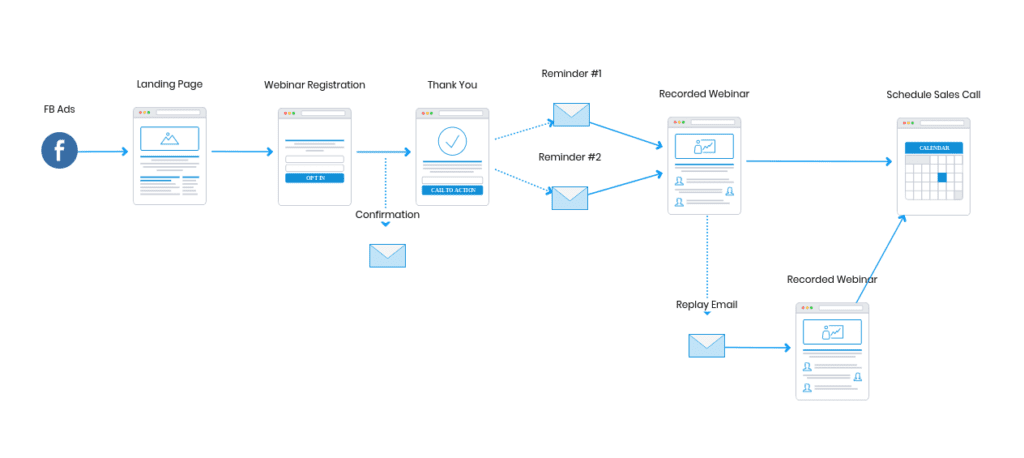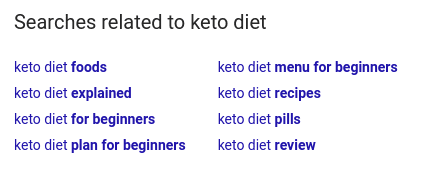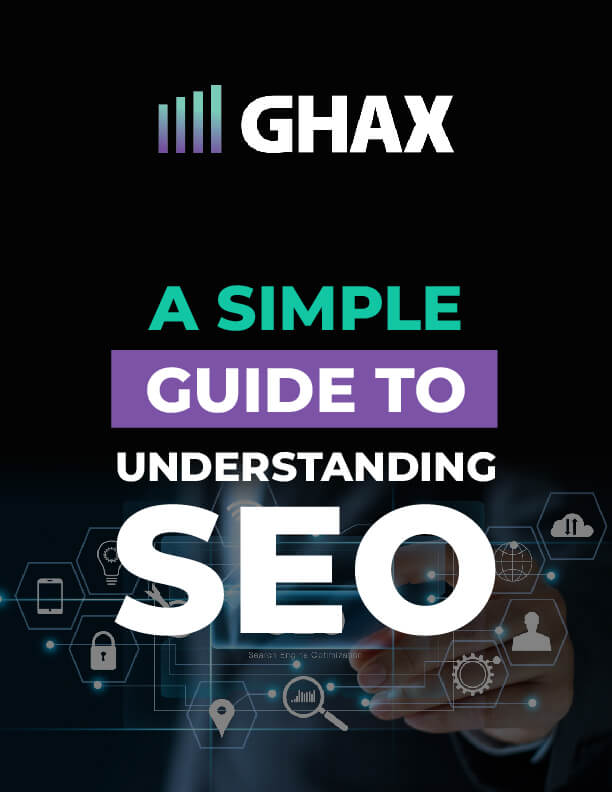The process of attracting and retaining customers to your online business is a tricky one. There are a number of things you need to do to ensure that you’re found, received, and engaged with.
It all breaks down to the efficacy of your sales funnel and your SEO campaigns that tie everything together. We’re going to talk about merging those two in this article, giving you an understanding of how to effectively SEO your sales funnel and start driving in traffic.
We’ll take a look at SEO and sales funnels individually, followed by an exploration of how to make everything work in harmony.
How to SEO Your Sales Funnel the Right Way
Hopefully, you have a working knowledge of search engine optimization and sales funnels in general. If you’re totally new, though, don’t worry.
We’ll take a look at the fundamentals of those disciplines and give you a good idea of what they are and how they function. Let’s take a look at what sales funnels are and what they entail.
What Constitutes a Sales Funnel?
Broadly speaking, a sales funnel is the process your customers undergo in order to make a purchase. It also includes the strategies you use to keep those customers coming back for years to come.

Hammering out the specifics of your sales funnel is crucial if you want to have a measured way of generating business. Nearly any business needs to have a funnel of some kind, and the process can be broken down in a pretty simple way.
No matter what kind of business you are, you’ll have to approach the following concepts in order.
Finding the Target Market
The first thing to do is to figure out who it is that you want to approach with your business. What kind of people are interested in your product or service and where do they exist online or in real life?
This could be a geographical group, an online niche, an age group, or people with specific interests or needs. The important thing is that you have a good idea of who these people are so that you can go about finding avenues toward them.
Once you’ve identified your market, you can begin to brainstorm ways that you’ll engage with them.
First Contact
The next move is to engage with this audience in one way or another. The method you choose to do this in will depend on your business. It could be a sales call, a cold email, or an ad campaign.
We’ll break into ad campaigns later, as it’s a crucial part of the SEO process.
This is the part where you make yourself known in some way, and it’s an important one. First impressions are everything, and not just in face-to-face meetings. It’s a matter of getting the quality of leads, meeting or exposing your content, and identifying how customers respond.
The response you get should be met by an analysis of what those customers need in relation to what you have.
Proposing an Offer
Now that you’re familiar with your market, it’s time to make some kind of offer to them.
This requires that you state your deal, promotion, or general product availability with an outlet for consumers to follow and make purchases. At the very least, your proposal should offer a way for interested customers or clients to get in touch with you.
Making the Deal
Next, interested customers will reach out or engage with you in a way that leads to a sale.
Again, the amount of skill involved in this step depends on the industry you’re in. In some cases, a representative will have to “close the deal” in some way or work to convince a person to make the purchase.
It’s generally thought that your offer should be convincing enough to do most of the work. In other words, you’ve found your market, identified their needs, and created a proposal that clearly meets those needs.
That should typically drive people to your sales pages or toward your product.
Brand Loyalty and Retention
The final piece is the process of ensuring that your customers stick around and come back for more. The biggest factor here is providing great customer service and giving customers exactly what they asked for – or sometimes – more than expected.
The steps that come before brand loyalty are crucial at this point because they’ve all established an expectation. Everything from initial contact to the conversations you have with customers leads them to believe that they’ll receive a certain thing.
Make sure that you meet the expectations you’ve set and stayed in touch with customers after they’ve made the purchase. That could mean reaching out with new & valuable content, promotional offers, thanking them for their business, or offering to put them on a mailing list for further deals.
That’s the sales funnel in a nutshell.
Each step of the way should be thought of as a standing piece of your business structure. Once the sales funnel is in place, it should stay there so it can be receptive to new business.
Where Sales Funnels and SEO Meet
Now, let’s talk about how you can SEO your sales funnel to get the most out of it.
We’ll start by giving a brief explanation of SEO so that the rest of the information makes sense as we work through it.
How Does SEO Work?
Search engine optimization (SEO) is a strategy used to make a website as receptive to web traffic as possible. Not only is the goal to attract users, but it’s also to direct them in ways that are useful to the site owner.
Millions of visitors to your website mean nothing if those users don’t buy anything, for example.
A good SEO campaign takes into account the preferences of the search engine algorithm as well as the interests of the user. In a lot of cases, those preferences and interests overlap.
Search engines try their best to rank sites that are valuable to the user’s keyword search. If the search results of Google tended to have nothing to do with what you searched, for example, you would probably switch over to Bing or another engine.
The algorithm is geared to scientifically pinpoint the websites on the internet that are going to provide the most value. There are a lot of factors that determine this and that’s why SEO can get so complicated.
With that in mind, it follows that good SEO is whatever will best serve the user. The following points are pieces of optimization that will work directly to benefit your sales funnel.
Let’s take a look:
1. Insightful Keyword Research
If you think back to the first stage of the sales funnel, the idea is to figure out who your target market is.
There are a lot of ways to do market research, but one way that’s closely tied to optimization is keyword research. Keyword research is the process of looking at commonly searched terms, identifying who it is that’s searching for them, and using that information to optimize your site.
You can learn a lot about who’s looking for your product by digging into keyword trends. Some of the best tools to use are SEMrush, Ahrefs, and Ubersuggest.
When you identify the most commonly used terms in your niche, you can look at the demographic information of the people searching for them. That means age, gender, location, and more.
2. Keyword Optimized Content
The next step of the funnel is to present yourself to the target market. The best way to do this is through optimized ads, but it’s best to conduct an ad campaign if you have some content to back it up.
Content is what will drive a lot of the traffic coming into your site. Instead of a lone-standing web page with product offerings, you should have a site that’s host to a rich set of content that engages users and answers questions.
How to Produce Content
The most effective way to streamline your sales funnel is to produce content in response to keyword trends.
Let’s say you notice that your target market is searching the keyword phrase “why is my ceiling leaking?” For the sake of this example, we’ll say that you’re a plumbing business.
You can infer a number of things from that keyword trend. First, people in that area are experiencing a lot of pipe bursts or water damage. Second, they need ideas on how to fix those issues.
You can then make content that answers those questions and provides solutions that direct those users back toward your business. Additionally, you’ll include “why is my ceiling leaking” throughout the post in spots that are fitted to SEO best practices.
That way, you’re making content that people actually need to read and you’re doing it in a way that highlights the value of your business.
Focus on Long-Tail Keywords
Long-tail keywords are typically easier to rank for than more broad, short-tail keywords.
For example, trying to rank for the short-tail term “keto diet” is much harder than the long-tail term “keto diet menu for beginners”, as the latter is much more specific.
One of the easiest ways to find appropriate long-tail keywords and phrases is to do a Google search for a broad term (such as “keto diet) and then scroll to the bottom of the page.
Google will show you Searches related to… the search term you entered. In the image below, you’ll see what Google suggests for the “keto diet” search.

Use this to come up with new topic ideas or as a tool to put together a much larger piece of content that incorporates multiple aspects of a broader topic.
3. Sponsored Posts and Ads
Before you get a solid following, your content won’t be seen by too many people on its own.
Great optimization could land you in top search results, and that will certainly do something to affect your bottom line but SEO doesn’t typically start working that fast.
The best way to get your business out there is to use sponsored posts and PPC ads. If you’re a user of any social media site (or Google, for that matter), you’ve been the recipient of one of these ads. They’re the ones that pop up in your feed or search results and have to do with things you’ve expressed interest in.
If you clearly identify your target market, you can place ads in the feeds of those people. That way, you don’t even have to be lucky for them to engage with the posts. They’ll have expressed interest in products like yours and you’ll start seeing results.
The Cost of PPC
The best part about PPC ads, other than the fact that they’re probably the first advertisements that people don’t mind seeing, is that they’re cost-effective.
“PPC” stands for “pay-per-click,” so you only have to pay for the ad placement when your content gets engaged with. You could reach ten thousand people but only pay for the one thousand that clicked on your ad.
Additionally, you can establish a budget that won’t get surpassed. Once you reach the number of engagements needed to fill out your budget, the ad will be removed and you won’t be charged anymore.
This is an excellent way for small businesses to market themselves because they typically have tight marketing budgets. Another thing to keep in mind is that you can set the ads up yourself if you don’t want to work with a marketing team.
4. Critical Analysis of Your Content and Sales Funnel
The last thing we’ll talk about is the importance of keeping tabs on your funnel.
There are online tools available to monitor everything from your engagement rates to the links that people are finding your site through. In other words, you have the ability to look at every element of your optimization campaign and sales funnel and see how things are working.
If you find that people aren’t going back to your sales pages from your content, you’ve got some user experience tweaking to do. This is important if you have a lot of people reading your content but no one buying anything.
You might also find that certain SEO strategies you’re using aren’t working well with your niche. Some demographics respond differently to particular strategies, so there’s no guarantee that any one will work.
The main thing is that you keep an eye on your key metrics and figure out what’s going wrong. A lot of times, traffic gets bottlenecked in one area and flows into sales when the issue is resolved.
Need Help Getting Started?
Understanding how to SEO your sales funnel is one of the first steps toward a thriving online presence. The process can get a little difficult at times, though, and we’re here to help.
Explore our site for more SEO resources and ideas on how to improve your digital marketing efforts.




